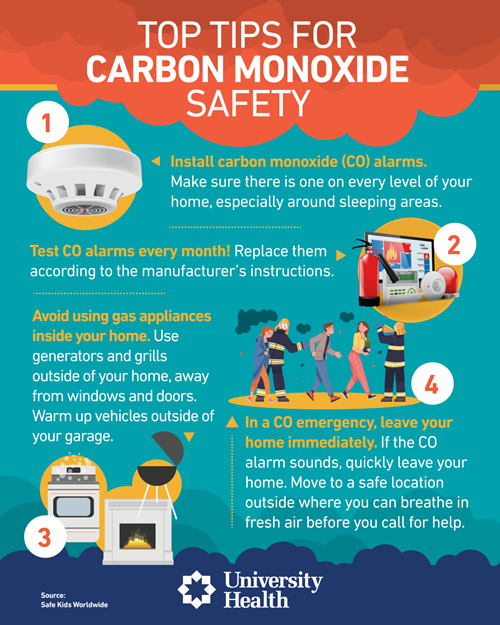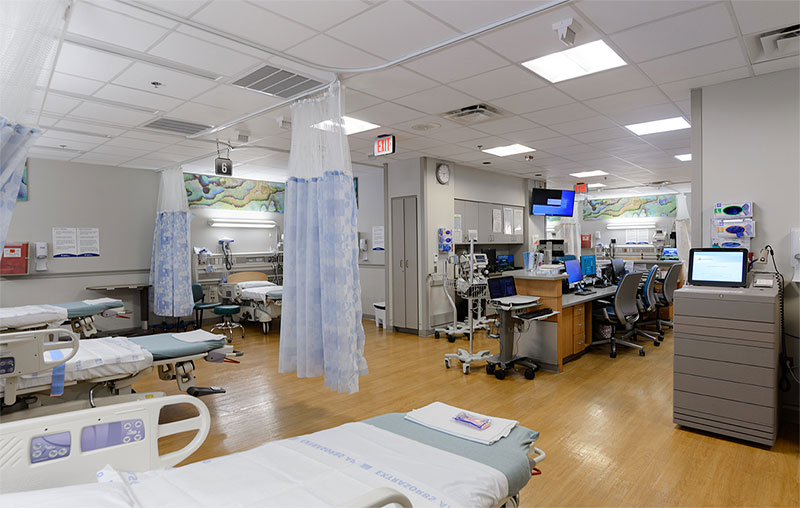San Antonio isn’t known for frigid winters, but February 2021 was a stark reminder of how harsh the cold can get. While storms like that are rare, preparing for the chilly weather is always a smart move.
Learn how to keep you and your family safe during cold weather.
How to Layer Your Clothing
When dressing for colder weather, you want to have three basic layers:
- Base layer for wicking away sweat (light polyester)
- Middle layer to insulate your body heat (fleece, down or flannel)
- Outer layer to shield you from rain and wind (windbreaker or rain jacket)
Don’t forget your cold-weather accessories. You will also need:
- Hat that covers your ears
- Gloves (waterproof if it’s snowing or raining)
- Waterproof, insulated boots
Staying Warm When the Power Is Out
Keeping yourself warm is the most important thing you can do. But what if you lose power or heat? Here are ways to keep yourself warm for extended periods of time:
- Wearing multiple layers of warm, loose-fitting clothing
- Covering gaps in doors or windows with rolled-up towels
- Closing rooms you are not using, especially if they share a wall with the outside
- Huddling together with family in a small room
It’s also important to check on the elderly or anyone you may know who is vulnerable to the colder weather, and make sure they are okay.
How to Use a Generator
If the power goes out, you may be left without electricity or heat. Some people choose to buy a portable emergency generator. It could provide you with the power you need until the grid returns to normal.
If you choose to buy a portable generator for your home, remember to NEVER run it inside the house or an enclosed garage. Generators produce carbon monoxide gas, which can be deadly.
Generator safety tips
- Never run the generator in your house or any enclosed space, including your garage
- Keep the generator running at least 20 feet away from your home
- Point the exhaust fumes away from your home
- Don’t run the generator in the rain
- Keep extra fuel on hand
Prevent Carbon Monoxide Poisoning
When the power goes out during cold weather, emergency responders see a spike in carbon-monoxide related illness and deaths. This is due largely to people using outdoor appliances to generate heat indoors.
Carbon monoxide poisoning can kill you. According to the Centers for Disease Control and Prevention, more than 400 Americans die from carbon monoxide poisoning every year.
Here are measures you can take to prevent it:
- Install a carbon monoxide detector in your home.
- Place generators outside in a well-ventilated area. Generators should be more than 20 feet away from any window in your house.
- Never use a gas grill, oven or other gas-fueled heat source to heat your home.
- If you need to run your car to stay warm or charge a device, move your car outside first.
- Check for ice and snow covering your car’s tailpipe before starting the car.
- Never run your car in a garage or other enclosed space.
- Don’t burn anything in a fireplace other than firewood or other materials labeled safe for use indoors.
- If using an indoor fireplace, make sure the flue is open and the chimney is cleared of debris, including snow and ice.
You can’t see, smell or taste carbon monoxide, so prevention is the only way to avoid poisoning. By the time you notice symptoms of carbon monoxide poisoning, it may already be too late.
Signs of carbon monoxide poisoning
- Dull headache
- Weakness
- Dizziness
- Nausea or vomiting
- Shortness of breath
- Confusion
- Blurred vision
- Loss of consciousness
If you notice any of these symptoms or think you may be suffering from carbon monoxide poisoning, move outside or to a well-ventilated area and call 911 immediately.
Cold-Weather Injuries
Most injuries that directly result from cold or icy conditions can be attributed to slip and falls.
Some of the most common cold-weather injuries doctors treat are:- Ankle sprains
- Back injuries
- Broken bones
- Concussions
- Head injuries
- Muscle strains
You may sustain any of these injuries while slipping on ice or even falling from a ladder while taking down holiday lights.
Working in Cold Weather
People who work outside in cold weather, or even inside artificially cold environments (like commercial freezers), risk suffering injuries that may permanently damage their skin or nerves. This might include police officers, farmers and sanitation workers. They are at a higher risk of developing hypothermia and frostbite.
Hypothermia
A combination of cold weather and wind or dampness can quickly lead to hypothermia. Temperatures in the 50s, when coupled with rain or high winds, can cause hypothermia. Hypothermia occurs when your body loses heat faster than it can produce it. During hypothermia, your body temperature drops from 98.6° F to 95° or lower.
Signs of hypothermia:- Drowsiness
- Lack of coordination
- Loss of consciousness
- Loss of memory
- Shivering
- Slurred speech
Frostbite
Frostbite usually affects your toes, fingers, ears, nose, cheeks and chin. Exposure to cold air and wind for too long can cause nerve damage to these parts of your body. If left untreated, frostbite can cause permanent damage to the tissue and nerves in the area.
Signs of frostbite:
- Prickling feeling in the skin
- Numbness, tingling or itching
- Skin turns white
- Skin appears hard or waxy
- Blisters form when skin thaws (intermediate frostbite)
Prevent Cold-Weather Injuries
You can prevent hypothermia and frostbite by:
- Wearing plenty of layers, including a hat, gloves, face covering and scarf
- Taking frequent breaks in a warm, enclosed area
- Staying dry and out of the wind when possible
- Working during the warmest part of the day
- Being aware of your symptoms before they worsen
It is also very important to keep an eye on your coworkers and tell a supervisor if you notice signs of illness.
Cold weather can be fun, but safety and injury prevention should be a top priority when cold weather arrives.
University Health Is Here for You
The health care professionals at University Health are prepared to treat an array of cold-weather injuries, including severe frostbite and hypothermia. Our emergency department has a Level I trauma center, prepared to provide you with the highest quality medical attention when you need it.





